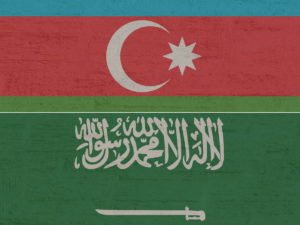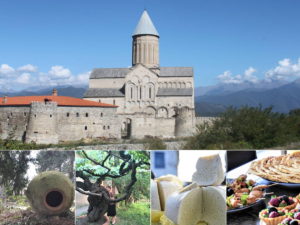Old stories, new memories in Valjevo, Serbia
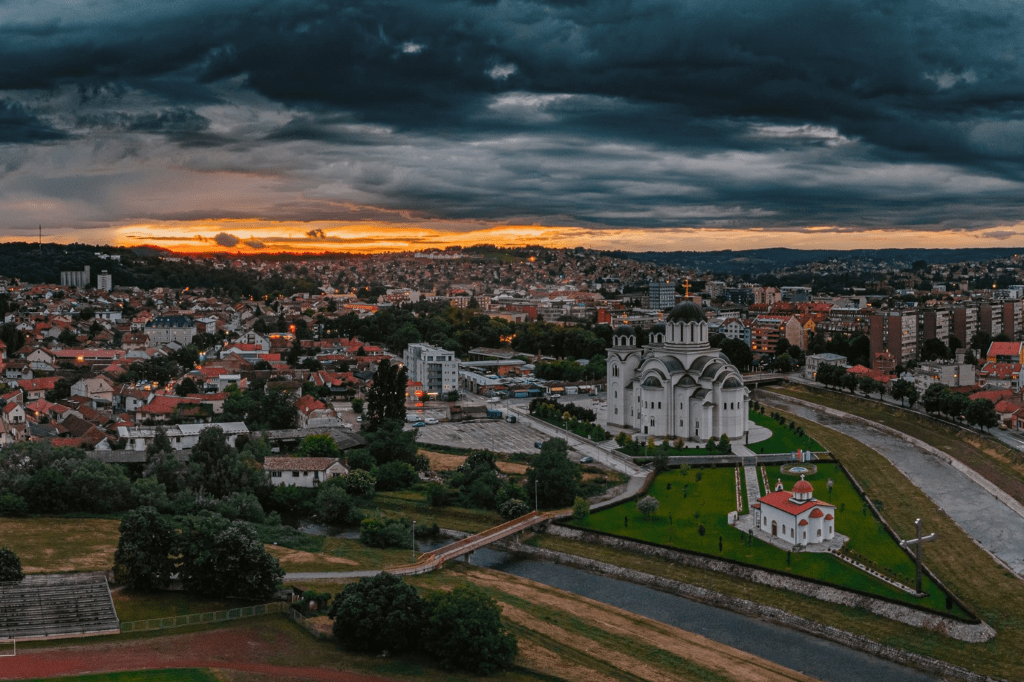
“Why didn’t you ever tell me that?” I shrieked.
“Well, you never asked,” my grandma replied.
I am unsure whether there was an echo of reprimand or remorse. Maybe I imagined it. Still, the accompanying smile hinted that she had been waiting for this moment.
I loved both my grandparents with all my heart. They were the pillars of my growing up. I excelled academically to make them proud. I was a cave explorer to defy their world of order and safety. And they covertly supported all my activities, even those that were “unbecoming of girls”.

The inside track
Ivana Damnjanović is the vice-dean for international cooperation at the Faculty of Health and Business Studies, Singidunum University, Serbia. A child of Valjevo and a sustainable tourism expert, Ivana has a passion for storytelling and teaching.
If there was one thing we had in common, it was that we cherished our city of Valjevo, a green gem in the west of Serbia. In the 1950s, when they were in their early 20s, unpromising rural life drove my grandparents to a developing town of some 20,000 inhabitants in search of their future.
My younger brother and I were born here. Our childhood, overseen by a devoted housewife and an industrial breadwinner, charted our lives. In the milieu of shared experiences, different ones imprint our memories.

My brother treasures the days our grandfather would sleigh-pull us through the snow-clad city. I would sit behind my brother and cling to his shoulders. Our cheeks were a furnace of excitement that melted the snowflakes falling from plane trees that still line our city centre street. Our grandpa would turn to check on us, smiling under the brim of his hat. His face beamed, reflecting the exhilaration boiling under our blood-red and navy-blue coats. Children today cannot imagine how we had the street’s wintry whiteness and silence all to ourselves.
For me, it was always the cooking. Our grandmother allowed me to help her make cookies. Her oily hands gently pressed the dough flowing through her fingers. I would sit in her small, simple, meticulously managed kitchen in a workers’ block apartment waiting for the dough to rise.
Dreaming over the city blanketed in late afternoon light from the sixth-floor kitchen window is the privilege of the few who live on top city floors. The valley opened seemingly endlessly towards Belgrade, but I felt protected by the mountain range half-circling the city behind our backs. The feeling of countryside still prevails in Valjevo, despite it being only 100 kilometres away from the capital; an hour and a half ride by car, bus, or train. Back in my grandparents’ youth, Ćira, the steam-powered rattler, took twice as long.
Despite values rooted in communism, our small family was proud of the Balkans’ second-largest Orthodox temple. In 2010, after almost two decades of work, the new white construction marvel became a welcome addition on the right of our kitchen window view. It stands confidently on the confluence of our two rivers, the Gradac and Kolubara, that flow through our city.
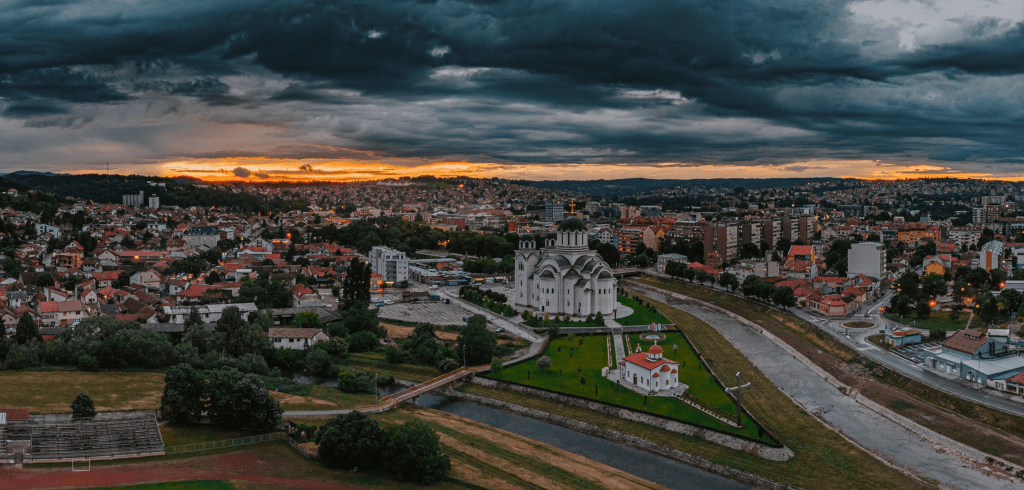
I knew that my grandma knew that I would sneak an extra spoonful of jam into the dough. It would irritate her. She threatened with high-pitched voice to hit me on the hind. But I would laugh, and she would laugh, and then she (almost) never did.
With a sigh, her gaze would drift to the window view and the hilly neighbourhood on the left. It is where my grandparents lived when their children were toddlers. I hoped she was happy, but there was an earlier life inside her, distant and ever-elusive.

“Why didn’t you ever tell me?”
“Well, you never asked.”
She filled a short silence by fingering the blue-grey wool she was knitting with.
“Each Labour Day, I walked down the hill …”
“This entire street?” I budged in. We were at the end of a two-kilometre road.
“It wasn’t really a street back then. But, yes, that way. And I walked to the cattle market to buy …”
“A cattle market?!”
“Yes, it was in the park you sit in every night. And then…“
When we were kids, my brother and I played in that park. We pretended it had trenches for our games. We still free-climb in the Partizan sports centre. Gathering around the park’s monuments has been a starting point for weekend nights out for young crowds for decades, including for us and our friends as we grew up. Hidden under the old lime trees overlooking the river, many love stories sparked in that park.
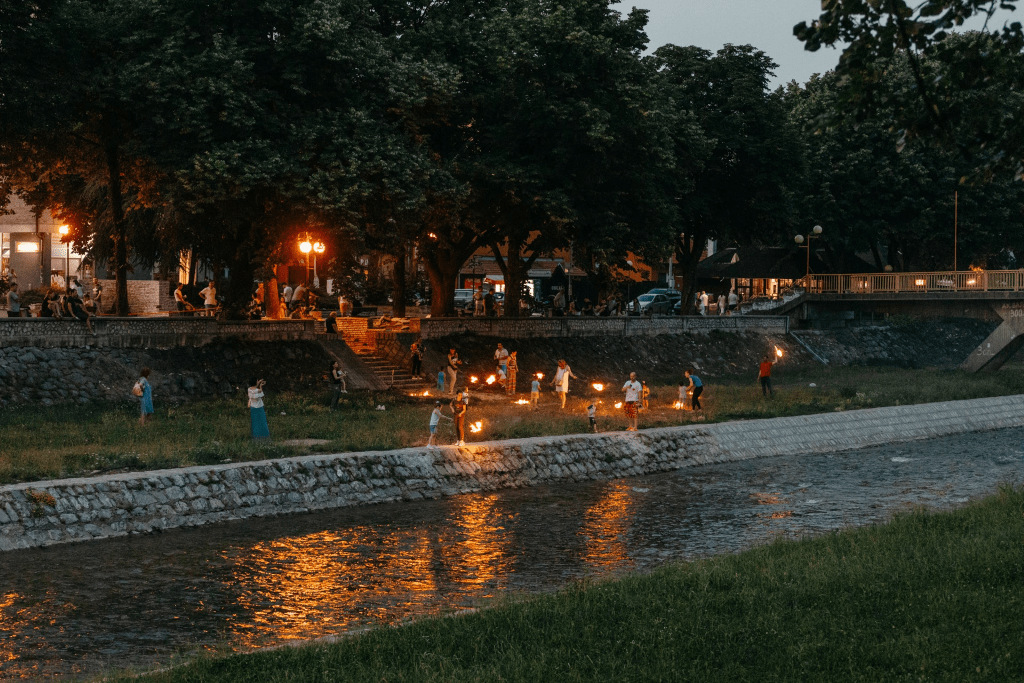
“You WALKED all the way there?” I learned to listen sometime later …
“And back, with a whole goose and a sack of potatoes. Then your mum and uncle ran down the hill to help me carry things.“ She said all this with a lulling simplicity, like the days she remembered.
“I was in charge of the decorations, music, and firecrackers.” It was my grandfather’s turn to speak. “I would bring a little extra explosive charge from work …” and he chuckled like a schoolboy.
He was a production manager at the arms manufacturing company.
That year their neighbourhood Labour Day celebrations went off with a bigger ‘bang’ than usual.
The retelling was before her dementia hid the stories. And before “I’m at grandpa’s” meant “at the cemetery”.
Home to about 60,000 people today, Valjevo continues to deliver memories that will be shared with grandchildren. For some it will be the Turkish-era cobbled street, Tešnjar, which together with the 19th-century trading street Knez Miloš hug the Kolubara River. They both still play a central role in city life.
Many of our parents met on the popular Korzo, a promenade that for the first eight decades of the 20th century would close to vehicular traffic in the evenings. Today, a pedestrian-only Korzo is a feature of the city’s summer festival, “Tešnjar evenings”.
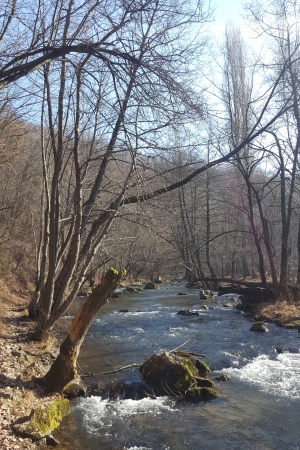
My grandkids will hear me reminisce about sweet summer dips in the protected rivers and lakes circling our city.
Enough time has passed in this city; enough lives have been touched by this place. Countless stories, recorded or forgotten, represent our shared and treasured history.
I should have known to perceive my family’s personal layers of reality.
Fortunately, the magic words that unveil a whole new world in my old place came in time. Seated together on the couch, we would let the dusk turn into street lights.
“Tell me about that time when …”
Where is this?
In western Serbia, “Valjevo is the administrative, economic, cultural, educational and health center of the Kolubara administrative district […] The whole area has a temperate continental climate. About 30% of the territory is covered with beech and coniferous forests, and the whole area is rich in numerous pastures, meadows and orchards”. _ Tourist Organization of the City of Valjevo (TOV)
To plan your visit to Valjevo, Ivana recommends perusing TOV’s website. She also reckons a visit to the National Museum of Valjevo is “really worth your while”.
Featured image (top of post): A 3:2 crop of a the panorama image of Valjevo, Serbia featuring the Balkans’ second largest Orthodox temple. Photo © Dimitrije Tanasković.




